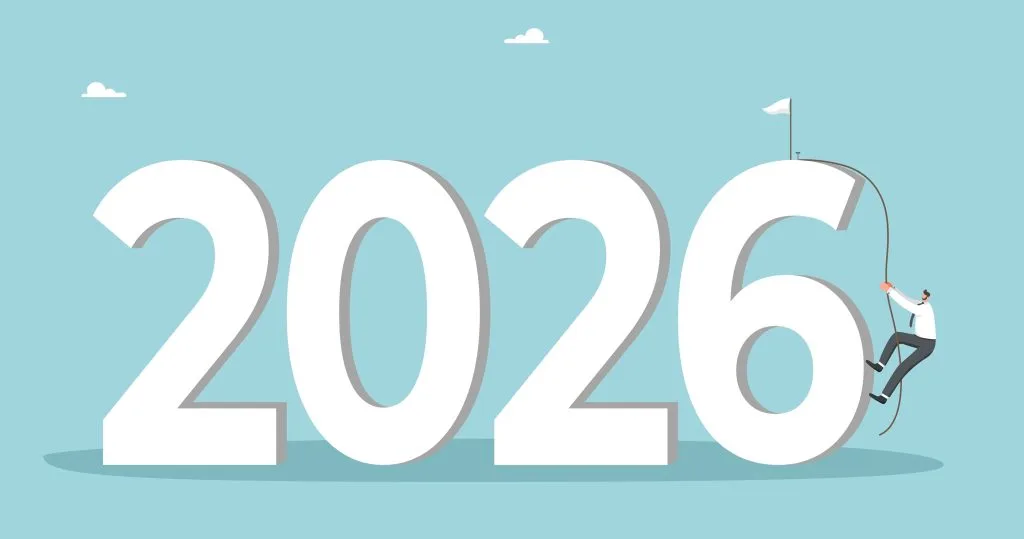Last updated on November 20th, 2025 at 12:03 am
Last updated on November 3rd, 2025 at 11:16 pm
Updated July 29, 2025

Are you reaching your “true potential” for personal production? Are you curious how you measure up?
I’ve consulted hundreds of dentists all over the US and Canada, representing just about any situation you might think of. All of which gives me a unique perspective when determining how to maximize a doctor’s potential.
Which brings us to the big question: How much should you be producing?
Quick Summary
- Daily production goals for general dentists range from $3,700 to $6,900+ depending on efficiency, case type, and practice setup.
- Ideal range: $4,600/day ($100k/month) for solo providers doing bread-and-butter dentistry with a hygienist or two.
- Upper range: $6,900+/day may be sustainable short-term, but it’s usually time to add an associate.
- Larger cases like implants, ortho, or full-mouth can push monthly production to $150k–$200k+—but only if they’re marketed and closed effectively.
- Associates typically produce 25–30% less than owners. Expect $1,600–$2,000/day depending on their role and experience.
- Common causes of underproduction: low case acceptance, scheduling inefficiencies, hygiene bottlenecks, understaffing (especially upfront).
- Top 3 fixes: Improve treatment acceptance, build a strong Hygiene Department, and optimize your daily schedule.
- Includes a free Practice Production Calculator to benchmark yourself against real numbers.
Variables
As we evaluate your potential, keep in mind that there are a number of variables at play here: fee schedules, insurance participation, number of chairs, associates, multi-practitioner practices, etc. Every practice has its own unique situation. Despite all of this, there are some basic guidelines I can give you to see how you measure up.
Now, as you read this, if you find that you’re underproducing, we’ll also cover some of the more common reasons that might be happening. And of course, we’ll also look at steps you can take to fix this and hit your potential!
(Want to enter YOUR numbers to definitively see how you measure up? Do a free Practice Production Calculation. No strings attached!)
And the last thing before I begin, I want to emphasize an important factor: While I’ll be discussing numbers and so on, this ultimately isn’t about the money. You’re there to treat patients and help them get healthier. And the most direct representation of the volume of this treatment resulting in healthier patients is the production dollar figure. It shows you how much you’re helping patients get healthy, which should always be the focus. When a practice fixates on fees or money—it creates problems. When you focus on improving patient health by helping get the treatment they need, things start to take care of themselves!
So, with that in mind, let’s have a look at our first scenario:
Scenario 1: Solo Doctor in a General Dentistry Practice
 We’ll use this, the most common scenario as a “yardstick” (and then we’ll cover the variables). In this scenario we have:
We’ll use this, the most common scenario as a “yardstick” (and then we’ll cover the variables). In this scenario we have:
- A Solo doctor practice who participates in some PPOs with reasonable fee schedules (no HMOs or very poorly negotiated PPO fees)
- Works 8 hours per day, 5 days per week (average 21.5 days per month)
- Does bread-and-butter dentistry (fillings, crowns, etc. Maybe a bit of endo or the occasional clear aligner, but it’s not the foundation of the practice).
- Has one or more hygienists—i.e. the doctor’s time isn’t tied up with lots of recall appointments
Note: These are not total practice revenues. This is just the doctor’s personal production. Once you add hygienist production to it, the total practice collections would be much higher.
Lower end: I’d expect: $3,700 per day (about $80k per month)
This is an “okay” range for a solo practitioner doing basic dental procedures – (i.e. not placing implants, etc.). It takes some speed and efficiency to get over $4k per day with bread-and-butter dentistry, and not everybody wants to practice that way – or they haven’t gained the experience yet to work that quickly. That’s totally fine. If you’re doing $80k per month in personal production, you’re doing fine. You could try to work more efficiently and get those numbers up, but it’s up to you.
(Related: 3 Ways to Boost Case Acceptance)
If you’re doing less than $3,700 per day, I would say that you should start looking at why you’re underproducing. We’ll get into a few of the more common reasons later in the article. Oftentimes, these production issues relate back to organizational problems as opposed to the individual doctor’s clinical speed.
Ideal range: $4,600 per day (about $100k per month)
Producing around $4,600 per day means that you’re working at a high level of efficiency, seeing a healthy number of patients, and doing more quadrant dentistry as opposed to single-tooth dentistry. This is where I like to see my clients in this scenario producing.
Upper range: $6,900 per day (about $150k per month)
I have a number of clients that have reached $6,900+ per day as a solo doctor while doing bread-and-butter dentistry. This is really maximizing your personal production. But… I actually don’t recommend trying to sustain this long-term. It’s time to look for an associate dentist.
At this point, you have more than enough production to justify hiring an associate. They can do the simpler procedures while you focus on diagnosing, presenting treatment, and doing more comprehensive cases. You can also do more CE to expand your clinical repertoire. This increases your practice’s potential much more than racing around yourself every day to try to make $150k per month.
For that matter, what happens if you sprain your wrist skiing or something and can’t produce for a while? I’d rather have an associate and some security.
Scenario 2: Solo practitioner doing a higher volume of large cases (implants, clear aligners/ortho, full-mouth reconstructions, surgeries, etc.)
 Now we’re entering a lot of variables into the equation. I’ve had clients that see a ton of Invisalign, ClearCorrect, or FastBraces cases that have added $100k per month to their practice from those cases alone.
Now we’re entering a lot of variables into the equation. I’ve had clients that see a ton of Invisalign, ClearCorrect, or FastBraces cases that have added $100k per month to their practice from those cases alone.
Similarly, if you place implants regularly, do all-on-4 (or all-on-6) cases, or other surgeries, this can potentially increase your average production significantly. I have a number of clients that are regularly seeing $20k+ individual cases, and this brings their monthly production up to $200k+.
Now, don’t assume that if you add Invisalign or learn how to place implants it will automatically boost your production like that. These cases must be marketed and sold to your patients—and despite whatever the rep or salesperson may have told you, these things don’t sell themselves. How to get more new patients and get them to accept the dentistry they need is one of the main things we teach here at MGE.
Associate Doctors
The numbers I gave above for a solo dentist do NOT apply to associate doctors.
I repeat: I would not typically expect an associate doctor to produce $100k per month.
(Related: 6 Ways to Get Patients Interested in Cosmetic Services)
When you have an associate, it’s a different scenario. In fact, there may be a number of different reasons that you hired an associate in the first place. Maybe you were looking for someone to do fillings, single crowns, and simpler procedures so you are able to focus on more complex cases. In cases like this, an associate doing $1,600–$2,000/day is great for the practice, because it frees up the doctor/owner to present and complete larger treatment plans.
Typically, the doctor/owner is going to have more experience, work faster and be a little more motivated. This isn’t a hard-and-fast rule, but it’s rare that I see an associate who works faster than the owner (although it does happen sometimes).
So, I would generally expect 25–30% lower production from an associate. And it may be even lower than that depending on your situation.
And if you find yourself in the rare situation where your associate does every type of procedure well and produces $80k+ per month—then you got lucky! But keep in mind, someone like that may start looking to open their own office!
Specialists
Unfortunately, there are so many variables with adding specialists to your practice that it deserves its own article! Be on the lookout for one in the future!
Predominantly HMO-Driven Practices
This is a very different type of business model than what I outlined above and has completely different criteria. If you’re primarily an HMO-driven practice I’d recommend getting in touch with us for a customized analysis (especially if you’re looking to get out of the HMOs). You can reach out to us for a free consultation here.
Reasons You May be Underproducing
So, how do you measure up? If you found yourself below the $3,700/day or $4,600/day figure, there are many possible causes. To pinpoint the specific culprit, it requires a thorough assessment of your practice. If you’ve never been to MGE before, we’d be happy to help you figure this out with a complimentary Practice Potential Analysis. Schedule your analysis free of charge.
As far as the more common reasons for “underproducing,” we have:
1. Insurance coverage dictating treatment (or just generally not getting comprehensive cases accepted)
 This is by far the #1 reason you’ll underproduce. If patients are only doing what insurance covers and you’re doing mostly single-tooth dentistry, you won’t utilize your full skillset and you’ll be spending a lot of time running between short appointments. To get up to those higher production ranges, you’ll need to be seeing some longer appointments each day for multiple procedures on the same patient or quadrant dentistry.
This is by far the #1 reason you’ll underproduce. If patients are only doing what insurance covers and you’re doing mostly single-tooth dentistry, you won’t utilize your full skillset and you’ll be spending a lot of time running between short appointments. To get up to those higher production ranges, you’ll need to be seeing some longer appointments each day for multiple procedures on the same patient or quadrant dentistry.
This is why you see these shocking production increases from MGE clients in our magazines and on our website—we train them on how to get through to their patients so that they want the treatment they need and opt toward more ideal treatment plans. And the place to start would be with the MGE Communication and Sales Seminars!
2. Not enough patients coming to the office
Most dentists think the problem is that they need more new patients. In my experience, that’s usually not the real problem. It’s a Hygiene Department problem. In order to diagnose enough treatment to produce $100k+ per month, you need to have a lot of patients moving through the practice. And they do that through your Hygiene Department.
If you’d been open for at least a few years and you’re underproducing, then odds are you’ve lost a lot of patients from your Hygiene program. And my first advice would be to work on reactivating those patients rather than making yourself crazy trying to get more new patients.
We teach you and your staff how to do this on our online training platform, DDS Success. I recommend doing a free demo. Or of course, you can schedule a free Practice Potential Analysis with an MGE consultant and we can address this area with you.
3. Inefficient scheduling
If you’re scheduled poorly it’s going to limit your production. That’s a given. But there are two aspects to this:
- Your staff are focused on “filling up” the schedule rather than creating a productive and balanced schedule. More on this. Ultimately, a day’s schedule should have a nice balance of high-value production appointments, medium-value production appointments, opportunities to diagnose/present treatment (or do a consult with a patient that has previously diagnosed treatment), and no-charge delivery type appointments (crown seats, etc.). And the Scheduling Coordinator should be evaluating if each day matches up with the daily production target while at the same time moving patients rapidly through their treatment plans to completion. This is not a matter of just throwing any appointment on the schedule where there’s a window.
- Sloppy scheduling—if the schedule isn’t blocked out properly, the times aren’t precise, it’s not overlapped properly over multiple columns, doctor time isn’t separated from assistant time, etc., then there’s going to be wasted time. We teach the complete MGE Scheduling System directly to you and your staff on our online training platform or at our live seminar, The Art of Scheduling.
4. Not enough dental assistants.
Ideally, the doctor should be working out of two chairs and there should be an assistant for each chair.
If you’re only working out of one chair, then there’s wasted time for patients being seated, prepped and wrapped up. The doc could be working on another Patient B while Patient A is being seated, x-rays being taken, etc. And if you’re working out of three chairs, it may actually be a little too hectic and create waste, as well.
5. Not utilizing your assistants’ full skillset
 If your assistant isn’t doing everything that they’re allowed to do in your state, then you might have more production potential. Anything that the assistant could be doing shouldn’t eat up the doctor’s time (unless of course you simply enjoy doing it and want to keep it for yourself, in which case that’s your prerogative).
If your assistant isn’t doing everything that they’re allowed to do in your state, then you might have more production potential. Anything that the assistant could be doing shouldn’t eat up the doctor’s time (unless of course you simply enjoy doing it and want to keep it for yourself, in which case that’s your prerogative).
If you’re not confident in your assistant’s ability, then you may need to do some more training with them or hire a new assistant.
6. Understaffed upfront
One big mistake dentists often make is thinking that in order to boost production they just need more practitioners or to offer more procedures. In most cases, though, they’re simply understaffed at the front.
After all, who gets patients into the practice so they can be diagnosed and treated in the first place? The front office staff! The people answering the phones, scheduling new patients, doing outreach, reactivating patients, making financial arrangements, etc. You can have all the doctors, hygienists and assistants you want, but if there are only one or two people at the front busy keeping up with the current patient flow, they simply won’t have time to work on getting more patients in and filling up the schedule.
7. Too many hands on the schedule
I’m a big proponent of having a dedicated Scheduling Coordinator, who is ultimately responsible and accountable for the schedule. Sure, the hygienist may put a recall appointment on the schedule or someone else at the time, but one person needs to be overseeing the schedule, coordinating with the team, keeping an eye on production targets, filling holes, etc.
When everyone is pitching in on the schedule, then nobody ends up being responsible for it, and you’ll wind up with holes, low production days, and appointments in places they shouldn’t be.
Want to Learn More?
Before we wrap up, here are some hand-picked resources to help you explore this topic further!
✨ Podcast Episodes
Episode 14 – How Much Should a General Dentist Produce Per Day?
Curious how you measure up in terms of daily production? Want to know if you have room for improvement? This week we bring on special guest Chris Menkhaus, Senior Consultant at MGE, to discuss how much a general dentist should produce daily and ways to maximize your personal production.
Episode 97 – Six Reasons You’re Not Making Your Production Goals!
Wouldn’t it be nice if you could just get that production lined up consistently every day and meet your goals like clockwork? That is possible with good planning! And if it’s not happening in your office, the culprit is most likely one (or more) of the six reasons Jeff covers in this week’s episode.
Keys to Maximizing Productivity
If I were to summarize with three simple things you could do to improve your production, they would be:
- Improving case acceptance,
- Building a strong Hygiene Department so you have adequate patient flow, and
- Efficient scheduling
And we can absolutely help you with these points! Contact us today at (800) 640-1140 or info@mgeonline.com for more information!



Hi MGE Team
I was wondering if you could provide a quick insight on pricing.
I want to create a website for a dentist’s office, but not sure how much is a reasonable and fair ANNUAL fee to charge.
I understand that they have healthy profit margins, but also overhead. But again, they do make money, but they have expenses.
See the double-edged sword that’s confusing me?
What would you say is a fair range that I could charge without a dentist hanging up the phone on me or needing to ‘think about it?’
Much success,
Enrique.
Here’s a link I found that you might enjoy:
https://www.dentalpost.net/salary-survey/what-is-the-average-dentist-salary/